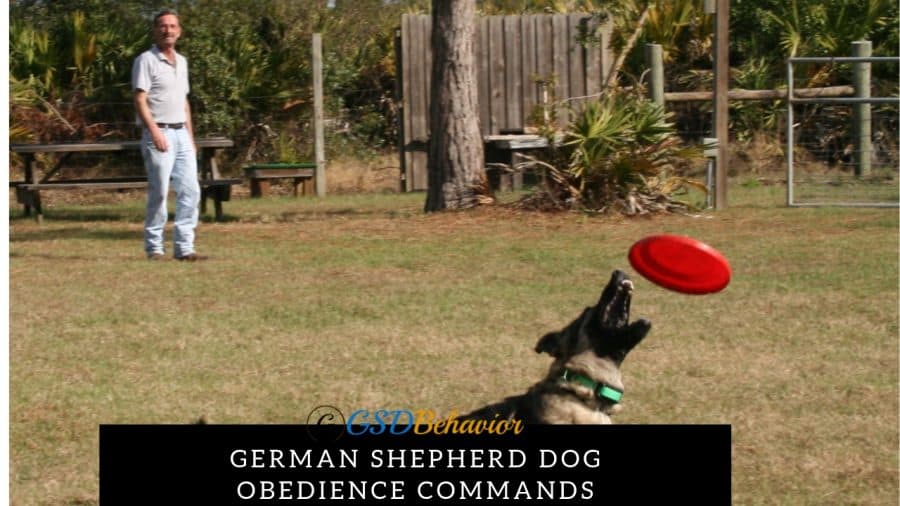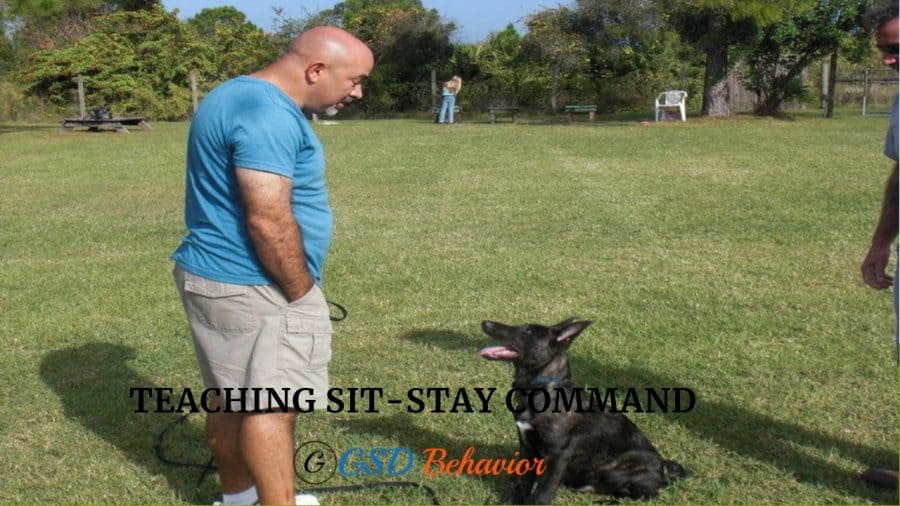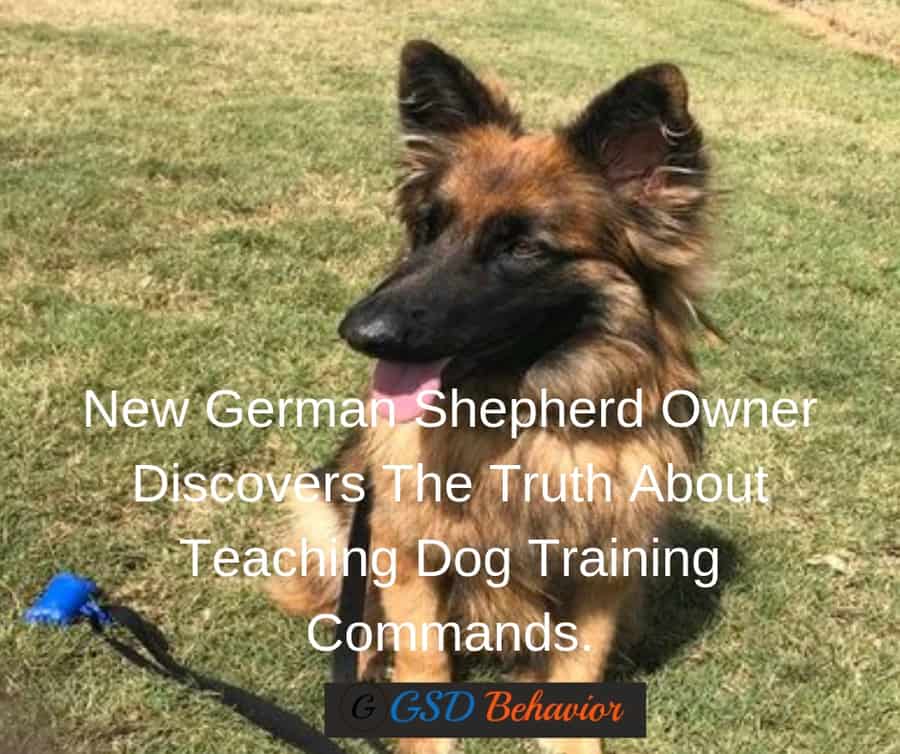What new German Shepherd Owners need to learn about teaching obedience commands, and how to avoid these mistakes from happening to you.
Are you trying to teach your German Shepherd puppy obedience commands? If yes” this article for you! Let’s get started.
German Shepherd Puppy Training
Breaking home a new puppy can be an exciting time for all of us. I don’t know about you, I’m like a little kid in the candy store when I get a new puppy!
Today I’m happy to sharing Tina Story,
You’re going to learn the truth about what happened with Tina, a stay at home mom was doing wrong with her new German Shepherd puppy when she was trying to train puppy obedience commands. Whether you’re teaching sit-stay down-stay or any other commands to your dog. You don’t want to confuse your puppy.
This is a big problem I see new German Shepherd owners struggle with all the time. But it’s not their fault. let me explain. You see, there are a lot of people out there called themselves dog trainers, but that is far from the truth.
Here’s what most people think. I had a friend that trained their German Shepherd this way, and you should too. But that’s, not true either. Just because you trained your last German Shepherd puppy this way, doesn’t mean you’re going to be able to train your new German Shepherd the same way.
All dogs learn the same, the problem is, they all have different temperaments. Some have a passive temperament, and some have a dominant temperament. A passive temperament puppy will be willing to learn quickly because they were not born to be a leader. Dominant temperament puppy will challenge you more because they are born, or bred to be leaders, not followers. This comes from the bloodlines.
German Shepherd Dog Trainer:
When Tina was looking to hire a dog trainer, the mistake she made was she hired a dog trainer that was a novice dog trainer. Novice dog trainers don’t have a lot of experience, and they all teach basic obedience 101 the same way.
German Shepherd Obedience Training:
Example, Dog Training 101-Is teaching commands with a 6-foot leash. The first thing they teach people is the heel command, and 2nd, sit-stay command, 3rd, down-stay commands, and 4th, come when called command, all on a leash.
Teaching our basic obedience commands is what we should be teaching our dog, but the one command we only want to teach when the dog is in the prey drive mode is the come when called command. If we keep doing the same routine that way, you’re just going to confuse your puppy.
I have a great article on puppy training leash work. Leash training your puppy will be one of the first things you’ll need to learn.
The problem is, the dog is learning when you drop the leash and walk away, and then you wait a few minutes and call them to you, is okay to break the stay command, or down command or stand command. You never want to teach the come when called command at the beginning stage of training this way.
Here’s why,
Your dog is master on judging your body language, and that’s why they keep breaking these commands. Have you ever notice how your dog watches you when you decide to go out somewhere or go to another room in your house?
All dogs are masters at studying human body language. Dogs and puppies learn body languages first and command second. So, when you start to teach your dog commands, It’s just a tone in the beginning, and a tone will become a command after they’ve done it with multiple repetitions consistently every day.
Have you ever seen someone out training their dog at a group class training like you see at pet stores, or a local park, and they keep walking back and forth 3 to 4 times because the dog keeps breaking these commands? This is because it was taught wrong.
Most dog trainers will tell you to go back and correct the dog by popping up on the leash or popping down on the leash to apply a correction to your dog every time it breaks the command. That’s wrong.
So let’s learn together how to do it a better way.
Teaching Down Command:

Hey, I’m Luna. Nice to meet you. I hope you like my video!
When you’re in the beginning stage of training. Whenever you’re teaching your dog these commands, you always go back to your puppy and praise them for doing the command you asked, and only release your dog out of the command from the heel position. You should only teach the come when called command, with a young puppy in the beginning stages, when the puppy is in the prey drive mode.
This means when throwing a ball or throwing food out in front of them or a few feet away from them, and then teach him/ her to come to you when given the command, and give them a lot of praise and food rewards too.
Teaching The Come Command:

Prey drive mode
This was the problem Tina, was having with her German Shepherd Luna. Luna was confused. Tina was struggling for months trying to figure out why her puppy was breaking these commands, and now that Tina understands what she was doing wrong, and had time to practice, now I’m teaching her how to structure her training in this video, Watch Tina working with her 15-month-old GSD puppy.
I’m going to be doing a follow-up lesson with Tina and her dog this coming week. If you want to see this updated video with Tina learning the come when called command for off-leash? Then I recommend you bookmark this page.
I’ll be posting the video right here!
I know she will be doing great because she is an action taker and will go home and practice her training with her puppy.
Teaching Sit-Stay Command:

Four-Month-Old Puppy.
Alex is learning how to teach his new puppy the sit-stay command. His is learning everything I shared in the video with Tina German Shepherd puppy. Look at the beautiful attention his puppy is giving him.
The big takeaway from today’s article is, don’t confuse your dog when your teaching any new commands. Take your time when training them. If your struggling trying to train your puppy yourself, then it may be a good time to hire and learn from an expert dog trainer that knows the breed.
It will be worth it in the long run and will pay off big time.
Now, I like to hear from you in the commons below. Tell me the one big thing you’ve learned from this article. I’ll be available throughout the day to answer all your comments. Talk soon! Dennis.

